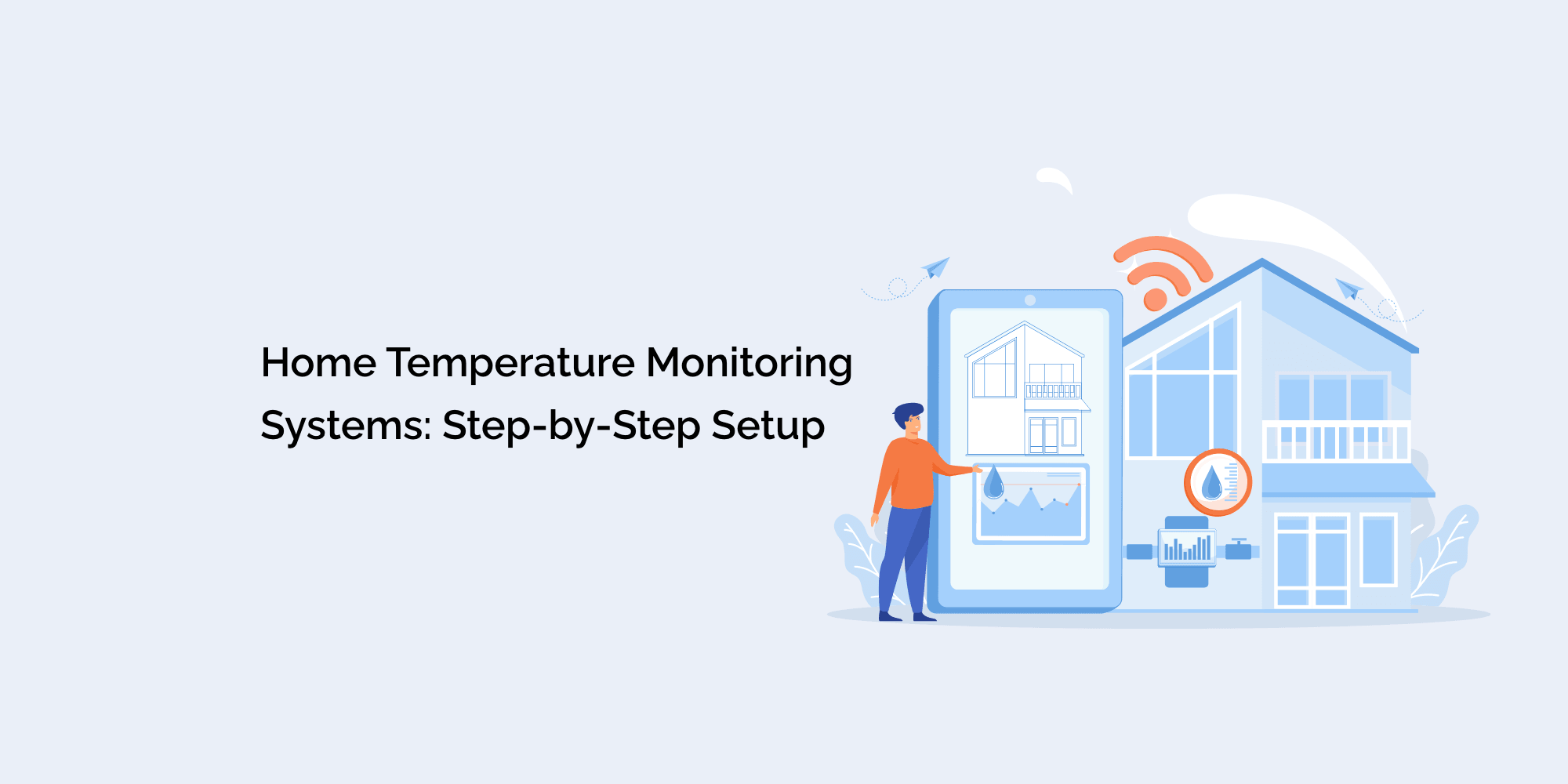Maintaining the ideal indoor temperature is essential for a comfortable and energy-efficient living space. With the advancement of technology, home temperature monitoring systems have become more accessible and user-friendly than ever before.
In this comprehensive blog, we will guide you through the step-by-step setup of a home temperature monitoring system. Whether you're a tech-savvy enthusiast or a homeowner looking to optimize temperature control, this guide will equip you with all the knowledge and tools necessary to create a smart and efficient home environment.
Understanding Home Temperature Monitoring Systems
What is a Home Temperature Monitoring System?
We'll start by defining home temperature monitoring systems and exploring their components. From smart thermostats and temperature sensors to data analysis platforms, understanding the various elements of these systems will set the foundation for the step-by-step setup.
The Benefits of Home Temperature Monitoring Systems
Delving into the advantages of these systems, we'll highlight the energy savings, comfort improvements, and environmental benefits they offer. Understanding the positive impact of home temperature monitoring will motivate you to embark on the setup process.
Assessing Your Home's Temperature Needs
Identifying Problematic Areas
Before setting up your monitoring system, it's essential to identify areas of your home that require particular attention regarding temperature control. We'll guide you in conducting an assessment to pinpoint hotspots, cold spots, and areas that may require additional heating or cooling.
Analyzing Your Heating and Cooling Systems
Understanding your HVAC (heating, ventilation, and air conditioning) systems is crucial for effective temperature control. We'll provide a guide on assessing your HVAC's capabilities, efficiency, and compatibility with smart temperature monitoring devices.
Choosing the Right Home Temperature Monitoring Devices
Selecting Smart Thermostats
Smart thermostats are the core of any home temperature monitoring system. We'll help you choose the right smart thermostat based on your needs, preferences, and budget. Comparing top brands and models will enable you to make an informed decision.
Integrating Temperature Sensors
Temperature sensors provide real-time data from different areas of your home, ensuring precise temperature control. We'll explore the types of temperature sensors available and guide you in selecting and strategically placing them for optimal performance.
Considering Smart Hubs
Smart hubs act as the central command centers for various smart devices in your home, including temperature sensors and smart thermostats. We'll discuss their advantages and how to select the right smart hub for your setup.
Step-by-Step Setup of Your Home Temperature Monitoring System
Preparing Your Home
Before installing the devices, you'll need to prepare your home for the setup process. This section will guide you through the necessary preparations, such as ensuring a stable Wi-Fi connection and creating a comfortable setup environment.
Installing Smart Thermostats
Step-by-step instructions for installing smart thermostats will be provided. From removing the old thermostat to wiring the new one and configuring the settings, we'll ensure a smooth and successful installation process.
Placing Temperature Sensors
We'll guide you in strategically placing temperature sensors throughout your home to capture accurate data. Proper sensor placement ensures the system responds effectively to temperature changes in different areas.
Configuring Smart Hubs
Configuring smart hubs and connecting them to your smart devices is essential for seamless operation. We'll provide detailed instructions for setting up and customizing your smart hub to integrate with your temperature monitoring system.
Implementing Automation and Scheduling
Setting up Automation Rules
Automation is a key feature of home temperature monitoring systems. We'll walk you through creating automation rules that adjust temperature settings based on occupancy, time of day, and other factors to optimize energy efficiency.
Creating Customized Schedules
Personalized schedules allow you to align your home's temperature with your daily routine. We'll guide you in creating schedules that match your waking hours, work hours, and sleep hours, ensuring comfort and energy savings.
Monitoring and Analyzing Temperature Data
Accessing Real-Time Data
With your home temperature monitoring system up and running, you'll have access to real-time temperature data. We'll explain how to view and interpret this data through your smart devices or a centralized data analysis platform.
Identifying Energy Saving Opportunities
Data analysis provides valuable insights into your home's temperature patterns and energy usage. We'll explore how to use this information to identify energy-saving opportunities and make informed adjustments to your setup.
Conclusion
By understanding the components, selecting the right devices, and configuring automation, you've created a smart and efficient home environment. Embrace the possibilities of home temperature monitoring and enjoy the benefits of precise temperature control, energy savings, and enhanced comfort.
As you continue to monitor and analyze temperature data, you'll gain deeper insights into your home's energy consumption, empowering you to make sustainable choices and live greener. By adopting a home temperature monitoring system, you embark on a journey toward a more efficient, eco-friendly, and comfortable lifestyle.








